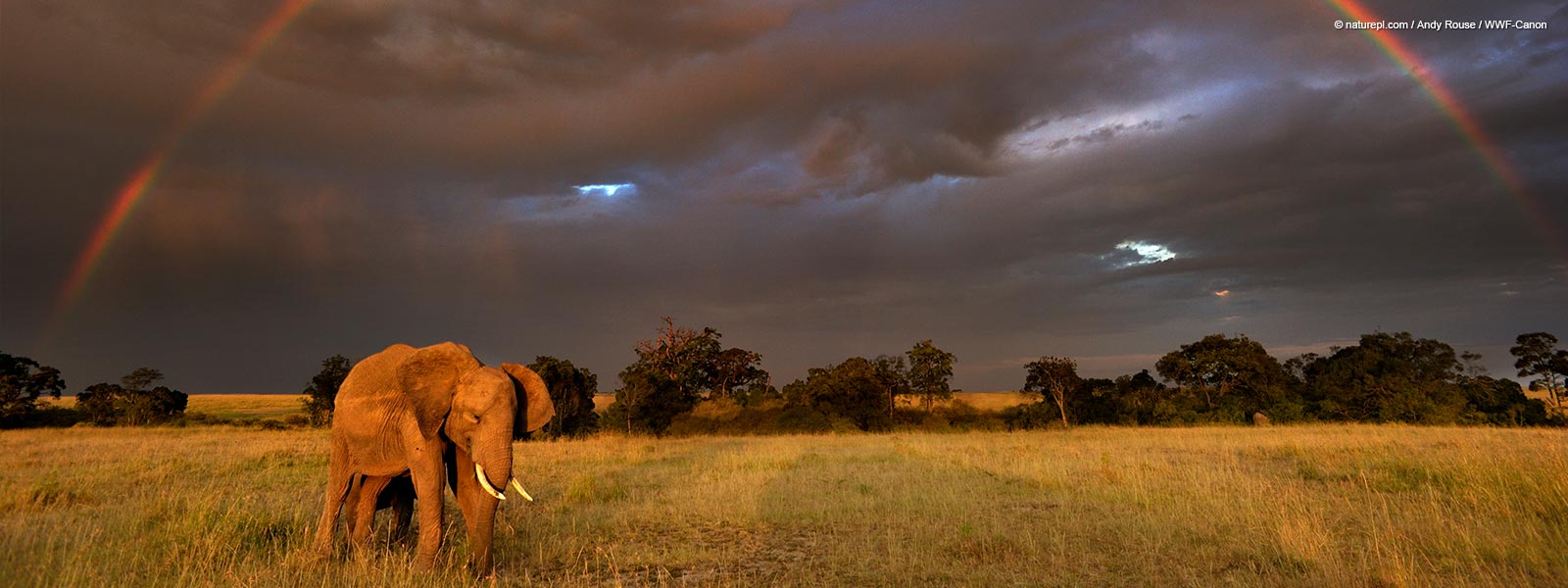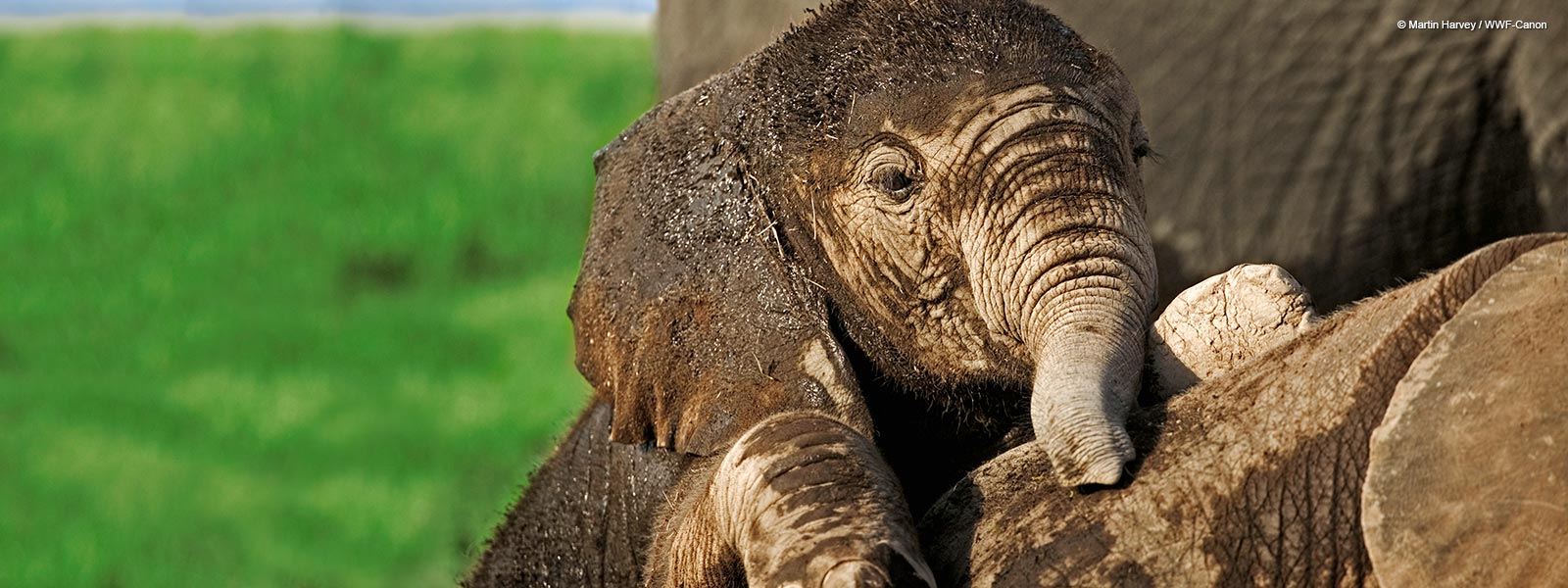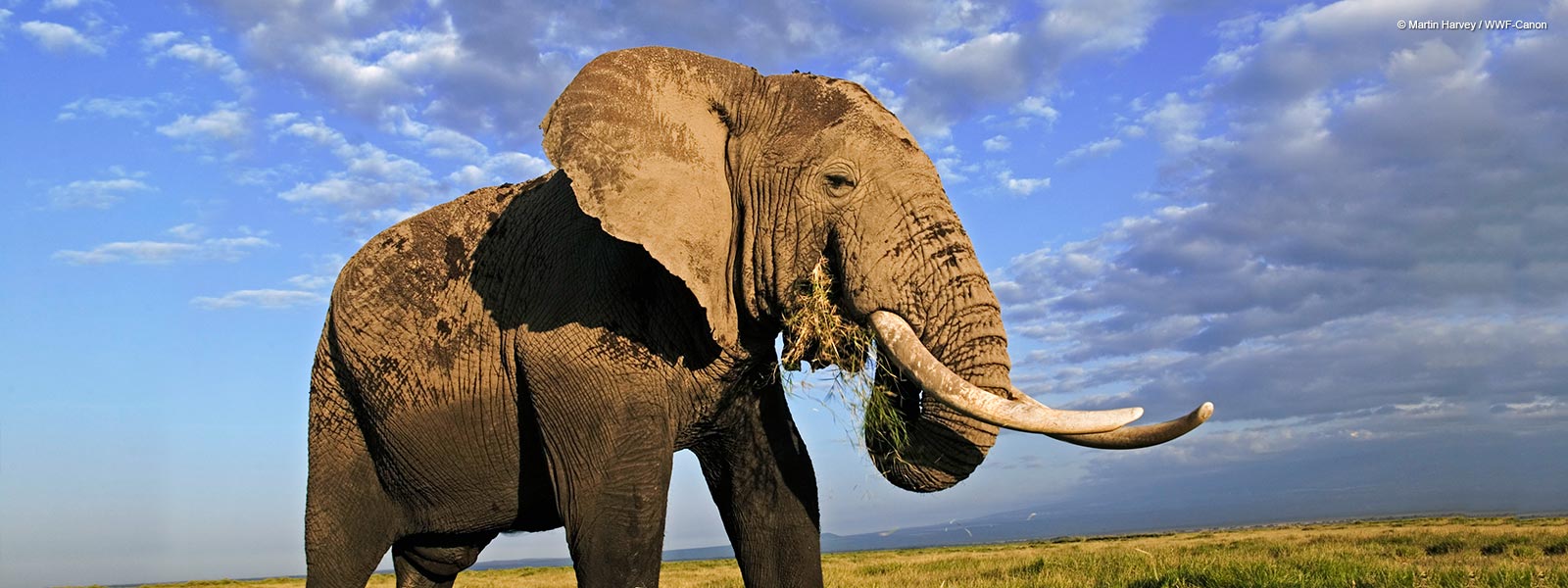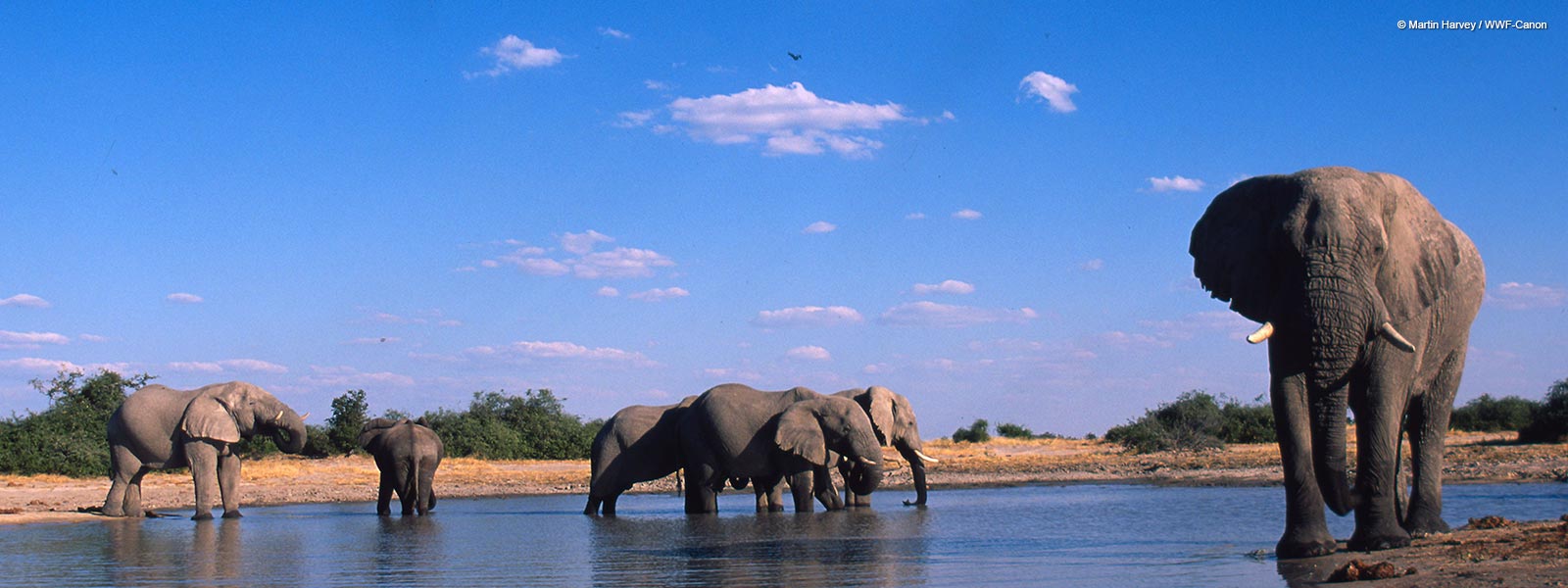The Life of the Elephant
Weighing up to eight tons, elephants are the largest terrestrial animals. They live in Asia and Africa. The Asian elephant (Elephas maximus) is an endangered animal. Isolated populations still exist in tropical and subtropical forests in southeastern Asia, from Nepal to Singapore, as well as in south India and Sri Lanka. The African elephant (Loxodonta africana) is considered a vulnerable species. African elephants are larger than the Asian ones and have distinctively large ears. They can be found all over sub-Saharan Africa, primarily in forests and savannas in the Congo Basin and in coastal eastern Africa.
Elephants are distinguished by their large ears and long trunk, which is used in many ways: as a hand to pick up objects or greet other elephants, as a horn to trumpet warnings and as a hose to drink water or bathe. The trunk is a highly sensitive organ with more muscles than the entire human body! Elephants are also distinguished by their tusks—their incisors, which grow throughout their life and serve as both tools and weapons. Unfortunately, poachers after elephant ivory kill tens of thousands of elephants every year, particularly in Africa.
The elephants’ imposing presence decisively affects the landscape of the areas where they live and roam. Every day they consume hundreds of kilograms of vegetation, mostly grass, leaves and the twigs of trees and shrubs. They can even uproot entire trees. They serve as gardeners, reducing shrub cover in the savanna and creating gaps that let the light through in the canopy of dense tropical forests. In doing so, they create favorable conditions for hundreds of other species. In addition, they give life to African forests: one third of tree seeds only germinate after having gone through their digestive tract.
Elephants live in a matriarchal society. Male elephants lead solitary lives, while females form herds and the calves are raised under their protection. Gestation lasts 22 months, making it the longest in mammals, and newborns weigh 50–150 kilograms!
Life under Threat
An estimated 3–5 million elephants lived in Africa between 1930 and 1940, but today their number has decreased to 470,000–690,000 individuals. Similarly, Asian elephants are today no more than 32,900.
In both Africa and the densely populated southeastern Asia, elephant habitats are being overtaken by crops and settlements, and elephants are continuously pushed into smaller areas while losing access to their traditional migration routes. Competing for available space is hard on elephants and humans alike. Cultivated fields are an enticing meal for elephants, who, consuming up to 450 kilograms of food per day, can destroy entire crops in a single passing, creating conflict and new problems for both sides.
The second most important threat to elephants is illegal wildlife trade. Elephants are ruthlessly hunted: up to 30,000 elephants are slaughtered for their tusks every year in Africa. During the 1980s about 100,000 elephants were lost every year and ivory trading was, therefore, banned in 1989. The problem had been mitigated; however, the recent rise in demand in the Asian and particularly the Chinese market has created a massive new smuggling network. Many are under the impression that elephants grow new tusks, but, in reality, ivory comes from dead elephants. Illegal ivory from Africa was laundered and channeled to Asian countries through Thailand, where the trade of domestic ivory was until recently legal.
The life We Protect
Working towards the harmonious coexistence of humans and elephants, we help local populations protect their crops from wild elephants in search of food. One way is to erect fences. Another is to protect the fields with “bombs” made of dung and chili pepper, which elephants detest! A broader objective is to ensure that the expansion of settlements is done with respect for the elephants’ ancient migration routes.
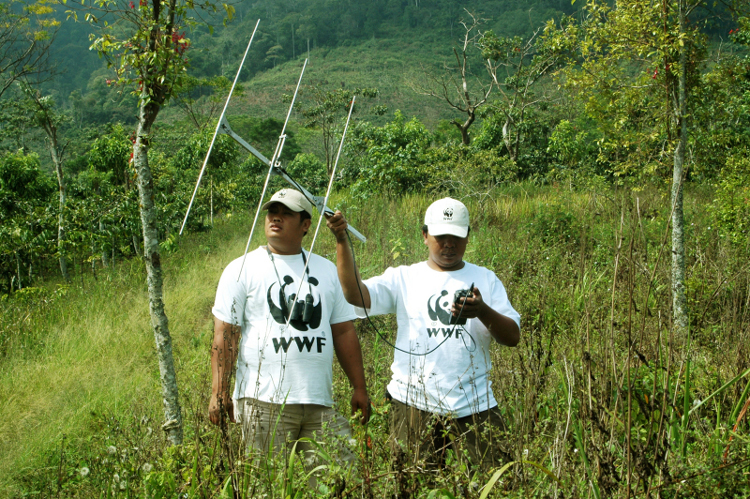
© WWF-Indonesia/Supriyanto
To address the grave threat of illegal wildlife trade, we train and equip gamekeepers to guard the areas where elephants roam. At the same time, we work to break the organized smuggling rings and hinder their access to markets. A great success came in 2013, when we delivered 500 thousand petition signatures from around the world to the Prime Minister of Thailand, requesting the banning of the domestic ivory trade. The Prime Minister committed to ending the Thai ivory trade as it facilitates the illegal trade of African ivory in Asia. With an annual turnover of 7.8–10 billion dollars, illegal wildlife trade is a well-organized crime, directly related to money laundering, arms trafficking, corruption and terrorism.
Share this




